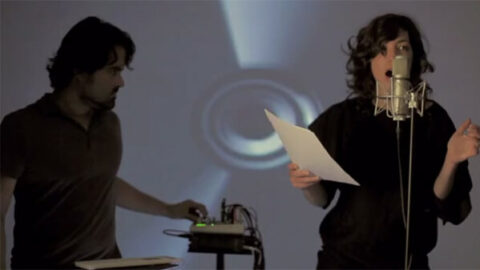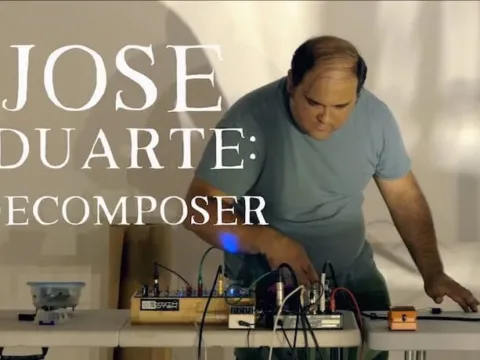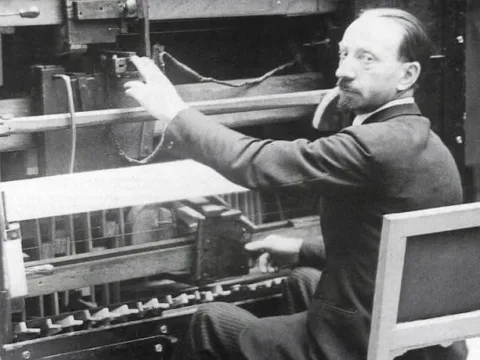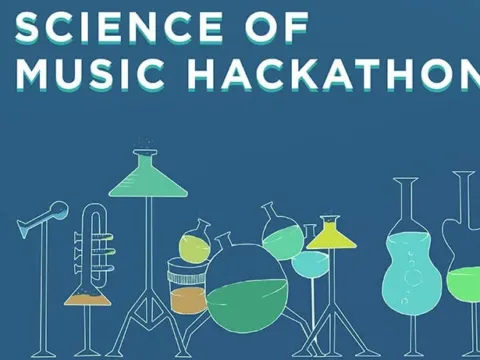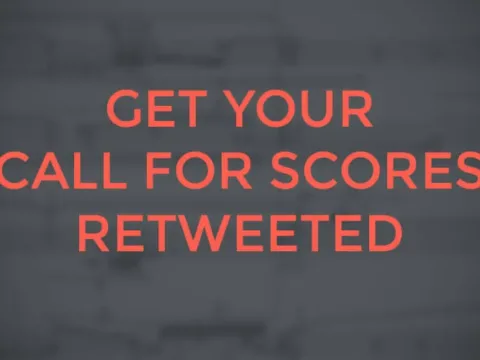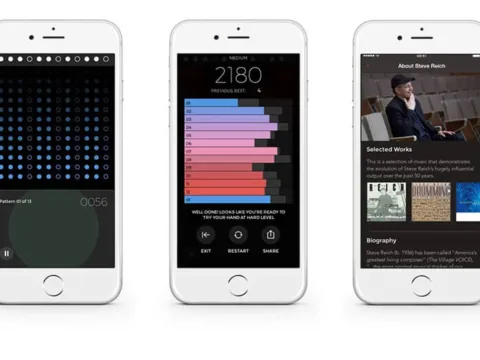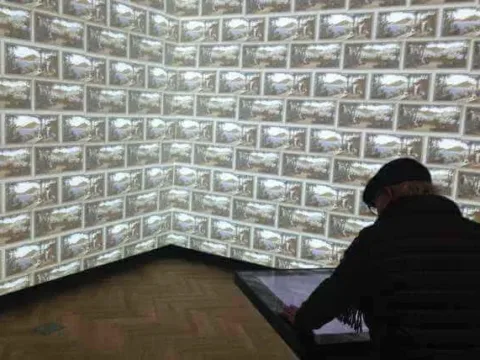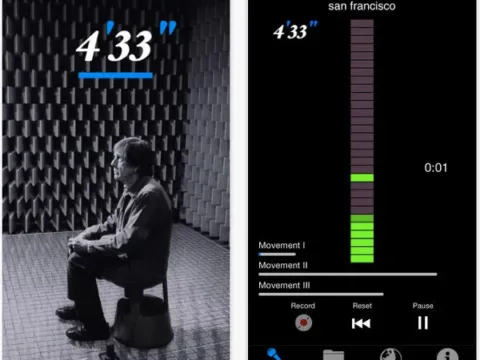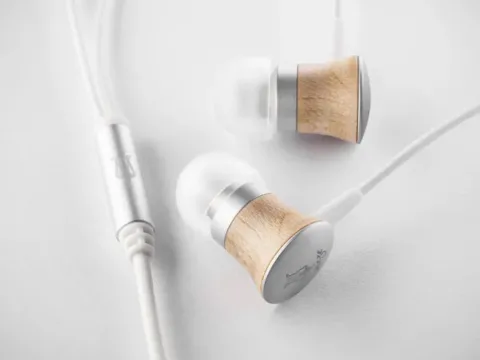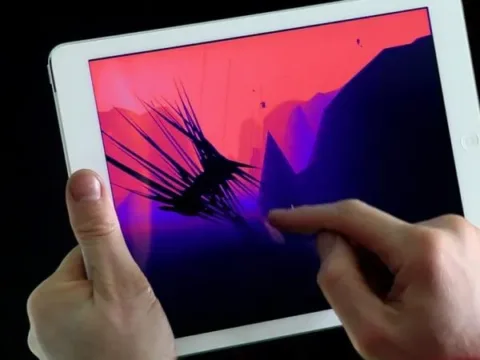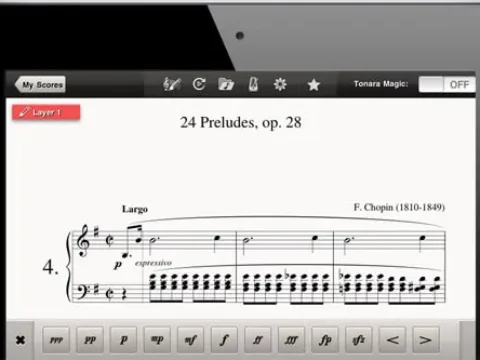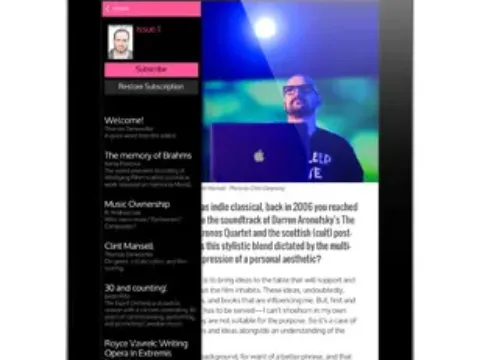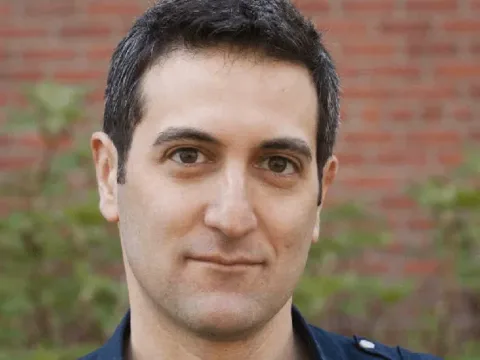Composer Henry Vega‘s latest work, Wormsongs, blends live vocals, real-time electronic audio, and visual projections into a multimedia performance that explores the concepts of extropy, social evolution, and futurism. The product of close collaboration between Vega, vocalist Anat Spiegel and visual artist Emmanuel Flores, Wormsongs celebrates human technological innovation, drawing inspiration from futurist writings, especially those of philosopher Max More.
As much a technologist as he is a composer, Vega is devoted to exploring computer-generated sound through the digital instruments he creates for his compositions. His work lies in the rich middle ground between the acoustic and electronic realms. Digital instruments are often performed in real-time and collaborate with strings, voice, and percussion in the style of a traditional chamber ensemble. Recently, Vega has focused on percussion instruments. He is the founder of The Electronic Hammer, a trio dedicated to performing works written for percussion and computer-generated music.
Completed in 2011, Wormsongs has since been performed throughout Europe, most recently at last month’s Rewire Festival in the Netherlands. A recording of the piece was released by the ARTEk Foundation in late 2011. Next year, the work will receive its US premiere with a performance at the MATA Festival in New York.
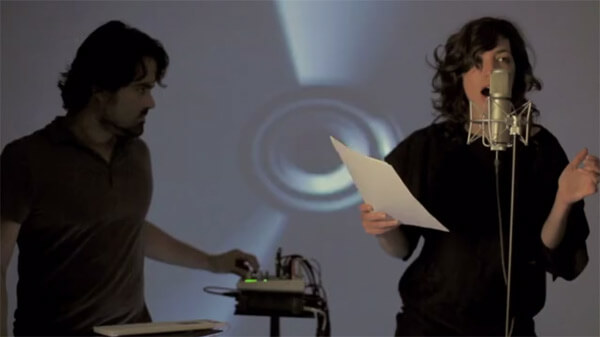
With Wormsongs, Vega explores a new “micro-minimal” aesthetic that utilizes digital instruments to highlight the natural rhythms of the human voice. The real-time nature of this interaction brings an exciting improvisatory element to the work. “Once you hear the music performed and see how Anat and I react together on stage, how her voice becomes multiplied and then reconvenes back to her, you get a sense of something novel melting into a thick paste with something traditional,” says Vega.
At the heart of Wormsongs is the written word. Texts on extropy serve as the foundation of the piece, which incorporates excerpts by a variety of authors, including Vega himself. “The most influential text came from (multidisciplinary artist) Georg Hobmeier, a great collaborator whose ‘Sermon on files and vile springs’ set the futurist theme for the whole project,” Vega notes, “His stream-of-consciousness writings and the way he avoids punctuations inspired me to go farther with (these ideas) both musically and thematically.”
Vega utilizes various techniques of integrating text and music. Works by composers Kenneth Gaburo, Philip Glass, and György Ligeti provided inspiration. “Something which became a feature in Wormsongs was the use of intoning or singing the text on a single pitch,” says Vega. “I first found this vocal style being used in religious services and it intrigued me.” Most of the excerpts were altered to achieve a more musical effect. His treatment of Hobmeier’s text emphasizes the sounds of particular words. “(The original text) is visceral and full of fast-paced imagery in continuous small fragments which are worth more time than a simple reading would allow. Hence cutting up the text, stretching it out was a way of savoring the words longer in a new context. In the reorganized text I found it beautiful that certain words would stick out and create a complex repetitive rhythm solely by their syllabic makeup.”
Anat Spiegel’s haunting vocals bring these rewritten texts to life. Her voice takes on a frenzied tone as she sings rapidly, sounding like a recording of a religious chant played back at double-speed. In addition to performing the tricky vocal part, Spiegel also responds to the real-time audio generated by Vega’s digital instruments. “The vocalist has the difficult task of blending herself between sine waves, tuned noisy samples of pianos or harpsichords, and cut-up samples of herself,” says Vega. “Furthermore, her score contains the same random glitchy elements that you experience in the accompanying (digital) sounds. When the cues (for these elements) accurately happen together you begin to hear the two mix in and out of each other.”
Vega’s equipment setup is simple, consisting only of a laptop computer, a mic, and a pad controller. He uses Apple’s Logic Pro software to sample Spiegel’s voice in real-time. The pad controller provides an interface to the digital instruments, which were created in SuperCollider, a computer environment and programming language used to generate algorithmic-based musical compositions. “The instruments I perform on the computer are all made to happen in real-time,” explains Vega, “There are no pre-recorded sections, only rules and samples which the rules manipulate.”
Recent performances of Wormsongs incorporate work by visual artist Emmaunel Flores, who created a set of computer-generated projections to accompany Vega’s music. Controlled by a laptop that is connected to Vega’s pad controller, the artwork responds in real-time to shifts in the score. Various elements of the designs are changed throughout the performance, including color, lighting, shapes, and panning.
When experienced as a piece of performance art, Wormsongs creates an immersive multisensory world that pays tribute to futurism without moralizing. Vega emphasizes that the work is designed to inspire meaning rather than convey a specific message. “Wormsongs refers to the future in an imaginative way. It’s stylized to trigger thought in the listener and hopefully lead them to their own ideas.”
The work’s micro-minimal style served as a springboard into Vega’s current projects. His upcoming CD release, STREAM MACHINES, features a string quartet commissioned by the Gaudeamus Foundation and two pieces performed by The Electronic Hammer. Also in progress is a work for strings, voice, percussion, and computer that draws inspiration from an intriguing mix of sources, including Ponzi schemes, Turing Machines, and Crazy Horse.
The potential of technology as a force in musical performance and composition is an idea that continues to inspire Vega. “One of the themes that More talks about is overcoming the fear of technology, learning to coexist with it and internalize it,” says Vega. In Wormsongs, “the musical style is aimed at being as simple as ones-and-zeros, starting material and stopping it in unspecified coordinated lengths. Out of these ones-and-zeros something beautiful emerges: the rhythmic randomness of the words, the intensity of the performance; it became something exciting and fresh for me, and a mine full of musical possibilities.”
–
Dana Wen (I CARE IF YOU LISTEN’s Technology Editor) is a Seattle-based pianist and software engineer who writes about music, technology, and everything in between. Follow her on Twitter @wenguin.
